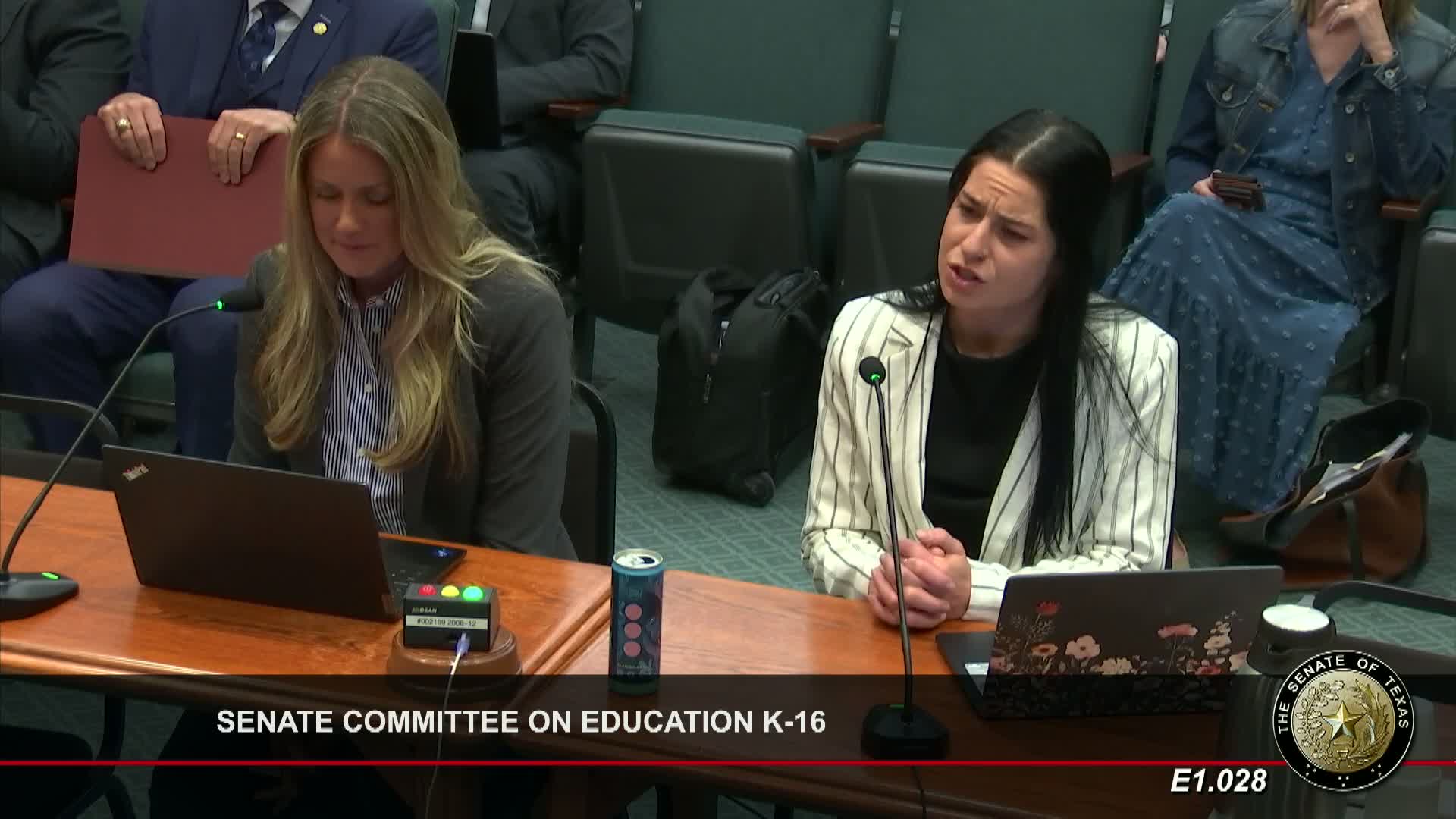Advocate pushes for clarity in student-coach boundaries following unsettling experiences
April 08, 2025 | Committee on Education, Senate, Legislative, Texas
This article was created by AI summarizing key points discussed. AI makes mistakes, so for full details and context, please refer to the video of the full meeting. Please report any errors so we can fix them. Report an error »

In a recent meeting of the Senate Committee on Education K-16, a poignant discussion emerged, shedding light on the complexities of student safety and the need for clearer guidelines in school environments. The atmosphere was charged as committee members listened to testimonies that highlighted troubling experiences faced by young athletes, particularly female students, in their interactions with coaches.
One speaker recounted a deeply unsettling memory from her teenage years, illustrating a stark contrast between the strict regulations governing student attire and the ambiguous boundaries surrounding coach-student interactions. She pointed out that while schools can specify exact measurements for shorts and shoulder coverings, there remains a troubling lack of clarity regarding appropriate physical contact between coaches and athletes. This gap in policy can leave students vulnerable and unsure of how to navigate uncomfortable situations.
The speaker's story painted a vivid picture of her experience at a district track meet, where she felt uneasy as her coach massaged her legs, a practice that, while not illegal, raised significant ethical questions. She recalled how other coaches looked away, suggesting a shared discomfort but no clear protocol for addressing such behavior. This sentiment resonated with many in the room, as it underscored the urgent need for comprehensive policies that protect students while providing guidance for educators.
As the discussion unfolded, committee members expressed strong support for proposed legislation aimed at addressing these issues. The speaker emphasized that this bill was not just a minor adjustment but a crucial step toward building a safer and more supportive educational environment. "This is a pebble in the foundation that we need to be building," she stated, urging swift action to implement the proposed changes.
The meeting concluded with a sense of determination among committee members to push the bill forward, recognizing that establishing clear guidelines is essential for fostering a safe atmosphere for all students. As they move toward a vote, the hope is that these discussions will lead to meaningful reforms that prioritize student well-being and accountability within school systems.
One speaker recounted a deeply unsettling memory from her teenage years, illustrating a stark contrast between the strict regulations governing student attire and the ambiguous boundaries surrounding coach-student interactions. She pointed out that while schools can specify exact measurements for shorts and shoulder coverings, there remains a troubling lack of clarity regarding appropriate physical contact between coaches and athletes. This gap in policy can leave students vulnerable and unsure of how to navigate uncomfortable situations.
The speaker's story painted a vivid picture of her experience at a district track meet, where she felt uneasy as her coach massaged her legs, a practice that, while not illegal, raised significant ethical questions. She recalled how other coaches looked away, suggesting a shared discomfort but no clear protocol for addressing such behavior. This sentiment resonated with many in the room, as it underscored the urgent need for comprehensive policies that protect students while providing guidance for educators.
As the discussion unfolded, committee members expressed strong support for proposed legislation aimed at addressing these issues. The speaker emphasized that this bill was not just a minor adjustment but a crucial step toward building a safer and more supportive educational environment. "This is a pebble in the foundation that we need to be building," she stated, urging swift action to implement the proposed changes.
The meeting concluded with a sense of determination among committee members to push the bill forward, recognizing that establishing clear guidelines is essential for fostering a safe atmosphere for all students. As they move toward a vote, the hope is that these discussions will lead to meaningful reforms that prioritize student well-being and accountability within school systems.
View full meeting
This article is based on a recent meeting—watch the full video and explore the complete transcript for deeper insights into the discussion.
View full meeting
